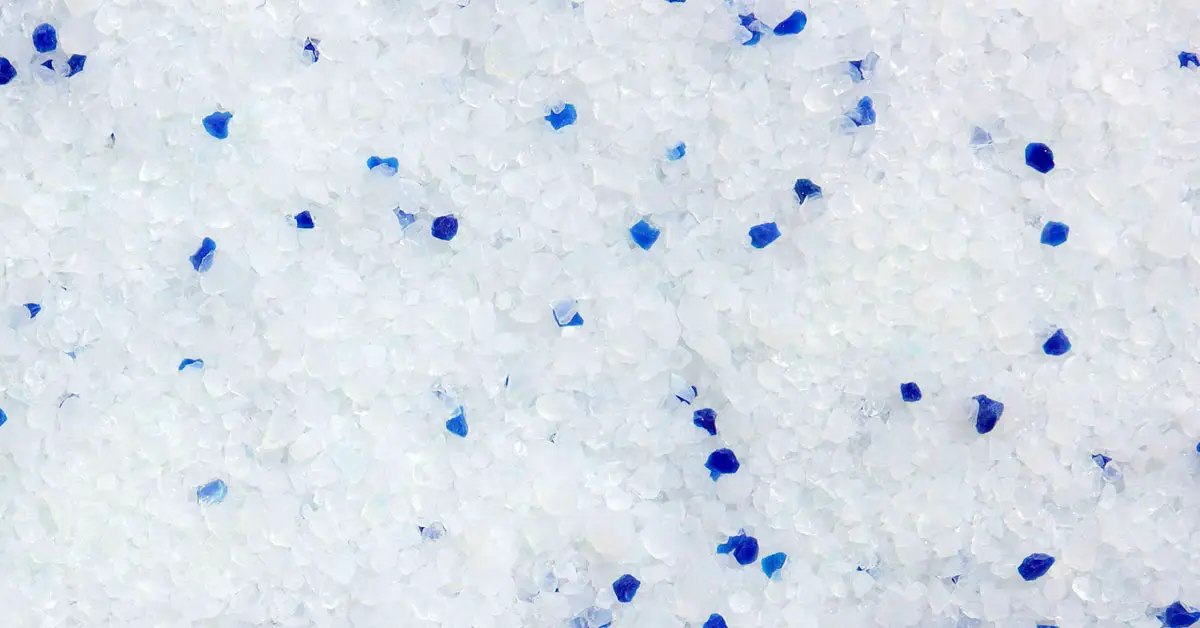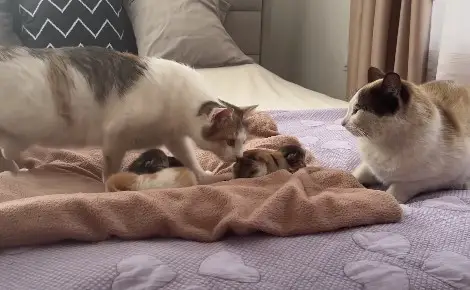Silica cat litter is popular nowadays. The silica gel crystals don’t generate the harmful dust that clay litter produces. The absorbency of silica gel crystals is higher. This litter ends up sitting in a landfill which causes considerable damage to the environment.
But the question is, is silica cat litter flushable? Although some company declares that, silica cat litter are flushable but still it is not wise to flush it into the toilet.
What Is Silica Cat Litter?
Silica cat litter is a type of cat litter made from silica gel. It is usually white or blue in color and is known for its absorbent properties. Silica cat litter is often used in litter boxes for cats who have allergies to other types of litter, as it is hypoallergenic.
It is also popular among owners who want litter that is dust-free and easy to clean up.
Things to Know About Flushing Cat Feces
The marketability of flushable litter is a hoax. Flushing cat feces have a negative impact on the environment. Cat feces carry parasites that can transmit fatal disease that affects birds and mammals, including humans.
Pregnant women are not allowed to handle cat litter. Flushing cat waste is harmful to marine life. Composting cat waste is the most eco-friendly way to dispose.
What Should Be the Better Alternative to Silica Cat Litter?
Biodegradable types of cat litter are plant-based. The biodegradable cat litter can be made from pine, grasses, wheat, walnut shells, corn and newspapers and so they decompose naturally. Some of these options have low dust levels and contain scent.
The product could be by-products of another industry or produced specifically for cat litter.
How to Reuse Crystal Cat Litter?
As crystal litter contains silica gel, it is a challenging job to recycle. Because silica doesn’t decompose. There are ways to reuse crystal cat litter without causing any harm to the environment.
- Use it to even out the lawn: Don’t dispose of used kitty litter on a vegetable, herb, or fruit garden. Cat waste can include parasites like Toxoplasma gondii, which is responsible for birth defects in humans. You can even out your lawn’s uneven areas and fill them out with used kitty litter.
- Preventing oil spots: Kitty litter has silica in its composition that absorbs liquids. You can use crystal cat litter to soak up any oil spots or spills.
- Kills poison ivy: Utilize it to get rid of any poison ivy over it around your house. The weed will be gone.
Is It Safe to Reuse Crystal Litter?
As crystal cat litter isn’t biodegradable, it can be harmful to plants. It’s bad to put animal waste in the garden because of the parasites.
How to recycle unused cat litter? Unused cat litter is safer to recycle as it lacks animal waste. Where you reuse it mainly depends on its type. Crystal cat litter is good for soaking up oil leaks.
Is silica dust in cat litter dangerous?
The dangers of silica dust exposure vary depending on the individual. Some people may be more susceptible to the harmful effects of silica dust than others, so it is always best to consult with a healthcare professional if you have any concerns.
If you have asthma or another respiratory condition, you may be more susceptible to the harmful effects of silica dust. Inhaling silica dust can irritate your lungs and airways, and can worsen your asthma symptoms.
If you have silicosis, a condition caused by exposure to silica dust, you may experience shortness of breath, coughing, and fatigue. Silicosis can be a serious and debilitating condition, so it is important to seek medical help if you think you may have it.
If you are pregnant, exposure to silica dust can increase your risk of miscarrying or having a low-birth-weight baby.
Overall, it is best to avoid exposure to silica dust if possible. If you must be around silica dust, make sure to wear a mask or other respiratory protection to reduce your exposure.
His professional interests include humane education, ethics, small animal behavior, and veterinary. As a pet lover from school life, having grown up with two cats and a dog. If he isn’t spending time with his friends and family, Justin enjoys traveling. Learn more about Justin here.


